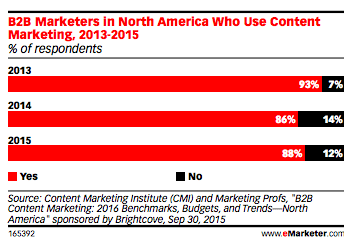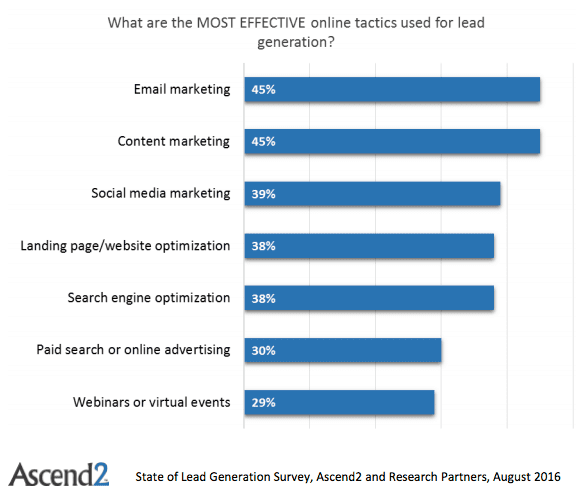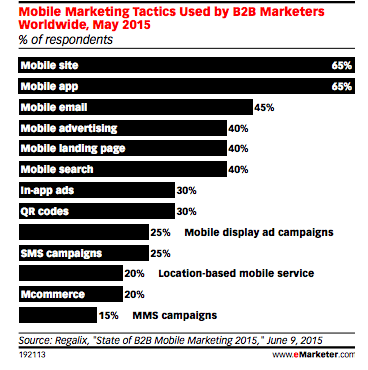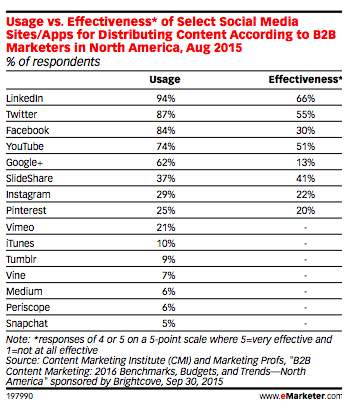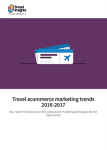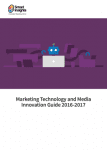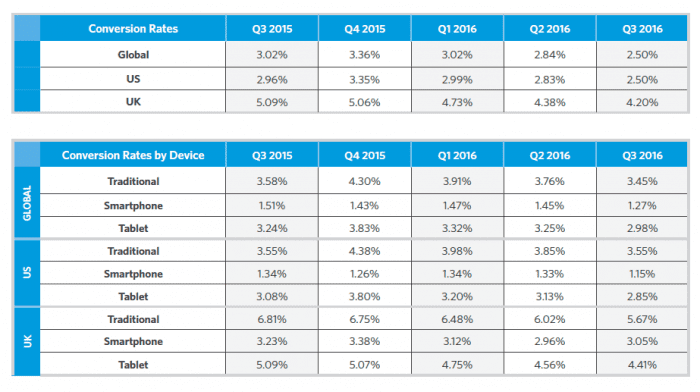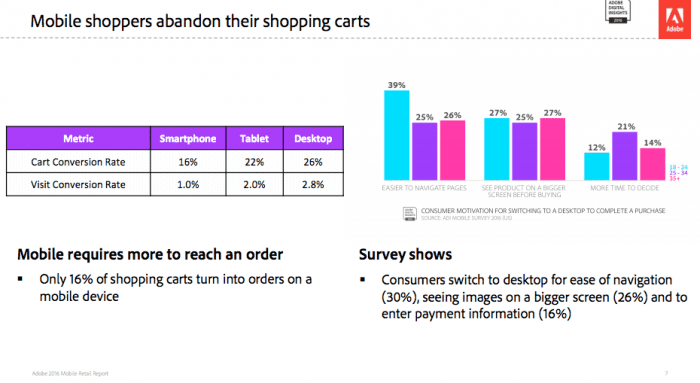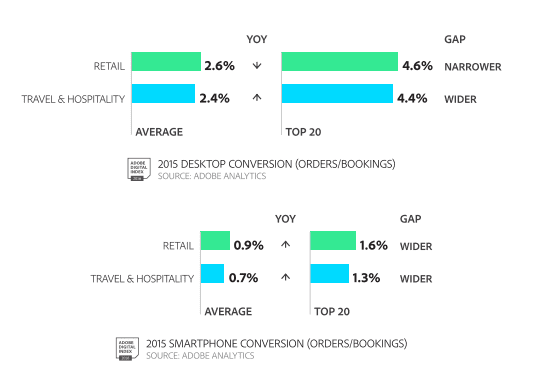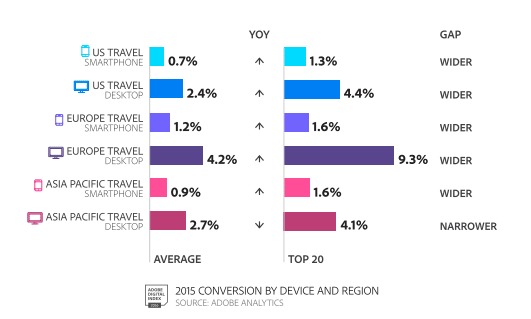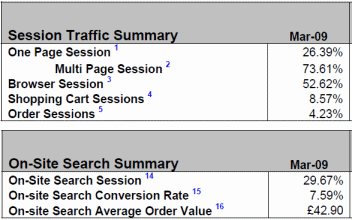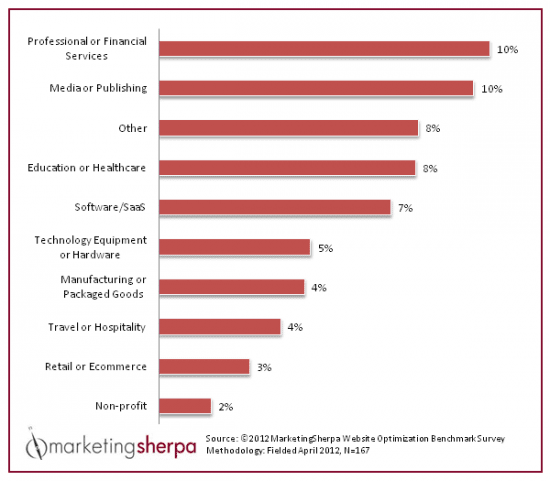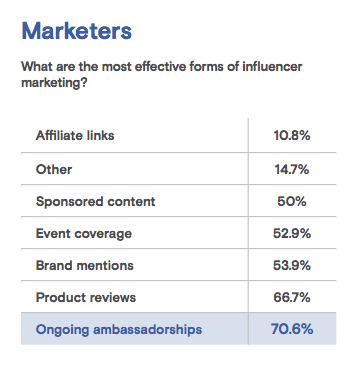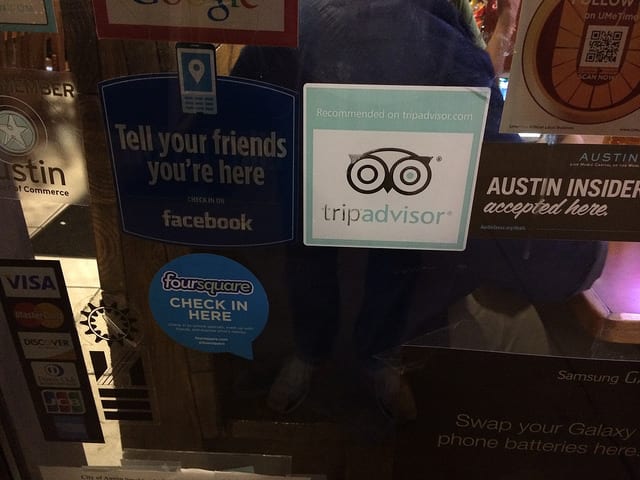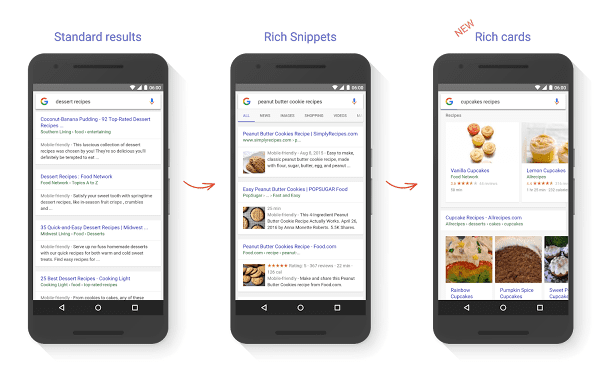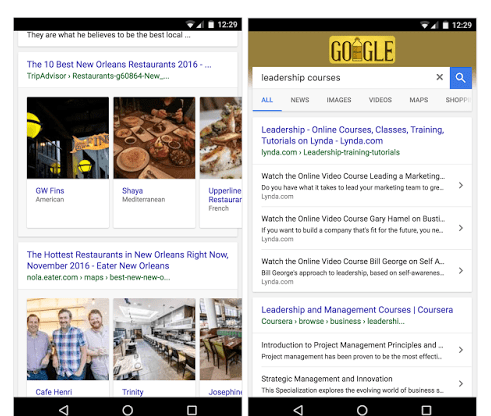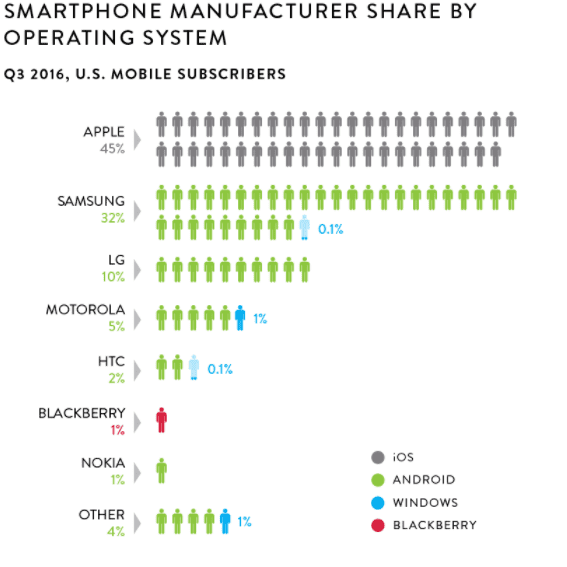Euro 3 Plast aim to help improve business productivity and also keep up with the latest technology.
Wednesday, 30 November 2016
8 Essential B2B marketing trends for 2017
The key trends that business-to-business marketers need to act on in 2017
Since we’re fast-approaching 2017, it’s a natural time for all marketers to review the marketing tactics they’ve used this year and assess their approaches against other businesses in the sector. For marketers involved in the B2B sector, there are some particularly pressing issues which, if they can be addressed will help ‘feed the funnel’ and develop more quality leads.
A good starting point for reviewing the trends that will make an impact next year is to think through innovation across all the main digital marketing channels. In our article on marketing trends for 2017, we asked marketers to assess the techniques which would give them the biggest uplift on business in 2017. The results show that the top rated techniques which should get focus next year are closely aligned with B2B sector, which has for the past couple of years been realising the importance of new technologies such as real-time personalisation, marketing automation and mobile.
1. Marketing Automation
Marketing automation is the perfect technology for B2B marketing. It provides an automated way of scoring and nurturing leads with relevant content along the journey to purchase. Yet our research on Marketing Automation (free download) shows that many businesses aren’t fully exploiting marketing automation since they are at an early level of maturity.
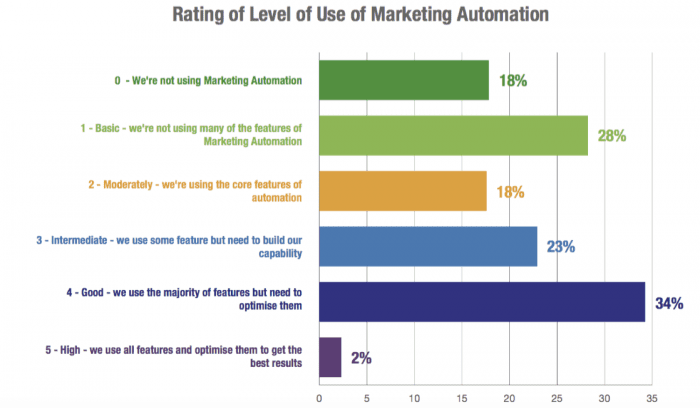
- A multi-step welcome sequence which can be made more relevant with dynamic content - a more advanced technique
- Lead scoring and lead grading so that rules can be put in place to send more relevant emails or outbound calls when prospects are qualified
- Use of re-marketing on third-party sites to nurture prospects who have shown interest in a product or service
2. Content marketing
Content marketing is a technique that has been used in B2B marketing for many years, but in recent years, the popularity of inbound marketing has given more attention to share blogs and social media. Over the past three or four years, readers have voted for the importance of Content Marketing amongst the marketing activities available. Within content and inbound marketing, I think the ongoing discussions will be around getting the right balance of content quantity, frequency and quality and of course, measuring the ROI of Content Marketing. This article around research from Buzzsumo gives an interesting summary explaining that Content Marketing’s Future Depends on Shorter Content and Less Content. I agree with the less content part, although not necessarily the shorter content part as research shows that longer content can be more effective in business-to-business blog posts.
Content marketing is a great tactic for B2B marketers because the long customer journey means customers will want to do plenty of research before purchasing, and compare several different providers.
3. Web personalisation
Website personalisation is a well-established technique for Ecommerce sites, but traditionally has been less widely used within business-to-business. It’s surprising since personalisation of emails using techniques such as dynamic content insertion as described above is popular.
There are now SaaS products such as BrightInfo and Evergage which make web personalisation services more affordable for smaller companies. These may also include automation features to recommend the most relevant piece of content within the nurture path.
4. Channel integration
With so many separate digital marketing channels there is a tendency to focus on individual channels, but an integrated nurturing process can reap dividends. One key trend here is the integration of different channels.
Another data point on this trend is this research on the top channels for generating B2B leads by Ascend which is a sense check that B2B marketers aren’t chasing the latest fads whilst not spending the lion’s share of their time on the channels delivering the vast majority of their leads or sales.
Another benefit of marketing automation is that it enables businesses to join up the customer journey between the website and emails, not only with email sequences when someone registers, but also through closing the loop and identifying when a prospect downloads content in future, so showing their interest or 'digital body language’ and further follow-up.
Another form of integration in nurturing is through re-targeting or re-marketing in Google AdWords where ads can be served to previous site visitors on Google’s display network. This option has been available for many years, but the trend is that new options are available with social media. Within B2B, LinkedIn is important and there are now new options to target within the LinkedIn programmatic service. Facebook and Twitter have also extended their retargeting options this year as part of this trend.
5. Account-Based Marketing
Account-Based Marketing or ABM is an established approach in B2B marketing, particularly within larger organisations who have structures and processes to target key accounts.
ITSMA which first pioneered ABM more than 10 years ago, defines it as “more than a sales or marketing approach; it is a collaborative strategy that engages sales, marketing, subject matter experts and delivery professionals, as well as key executives
in the chosen client account to determine where and how to best meet the client’s unique business challenges. With deep insight into the client’s business and key goals, this collaborative team creates a well-orchestrated marketing and sales campaign for a single account.”
Previously, ABM was a tactic or mindset which was poorly supported by most Marketing Automation services which focus on individual customer records. The trend is for automation services to include ABM features which make it easier to nurture groups of people automatically through email and re-targeting.
6. Mobile marketing
It goes without saying that the shift to mobile is a key trend for B2B marketers, as it has been for several years now. We’ve included this for completeness since Google tells us that most businesses have a responsive site, so you could say it’s no longer a trend. However, changes that will affect B2B marketers in 2017 (particularly those who don’t know about them) including Google’s new mobile-first index and potential penalties for pop-ups.
Mobile now accounts for over half of web traffic, and where previously B2B companies could assume that their customers would be researching them on desktop devices, now a new breed of business owner using mobile devices to research solutions on the go means B2B marketers need to be sure that their content is mobile optimised to ensure a smooth processes for users on all devices.
Over half of B2B businesses have mobile sites and mobile apps, which shows the industry is finally starting to get is act together on mobile. For some industries, having a mobile app won’t be necessary, but really all should have mobile responsive sites. Even if none of your customers are arriving on mobile devices (which some certainly will), you still need a responsive site because of Google’s 'mobilegeddon’ update, as otherwise you’ll be getting penalised.
7. Social media
This research shows that B2B businesses tend to get the best results from LinkedIn and Twitter, but are present across a wide range of social networks. Youtube and Slideshare also stand out as particularly effective, whilst Google+ is very ineffective considering the majority of B2B businesses are using it.
With B2B social media it’s often important to prioritise, as whilst it is easy to set up an account on a new social network, it requires plenty of effort to run it effectively. Focusing only on the most effective networks is usually the best tactic.
So, these are our seven trends and some practical ideas of techniques within them. Do let us know of other digital marketing tactics that you think will be effective in the year ahead.
from Blog – Smart Insights http://www.smartinsights.com/b2b-digital-marketing/key-b2b-marketing-trends-2016/
via Tumblr http://euro3plast-fr.tumblr.com/post/153863630069
Boosting travel sales with virtual reality
Virgin Holidays Case Study: How to use virtual reality to show off your product
Particularly relevant for travel retailers, virtual reality provides an opportunity to showcase their product in a way that was previously impossible. Perhaps it’s the best new technology for the sector since the jet engine! This first example shows how can now take your customers under the sea, to the top of mountains and onto the sunniest of beaches without them having to leave the branch, as this 360° video from Qantas shows.
The Virgin Reality initiative
Many travel brands have started experimenting with using VR to let customers ‘try before they buy’, and have done so by creating 360° videos which viewers can pan around. We’ve got to admit, they’re pretty darn cool, and a lot of fun. But technically, they aren’t virtual reality. Virtual reality means being able to look around the virtual world like it really is reality, that means an immersive experience, not panning around with a mouse.
Access Expert Business Member resource – Travel Trends Guide
The travel sector is forever adapting and with our travel trends guide you’ll discover case studies, examples and techniques which can help you keep up.
Access the Travel ecommerce marketing trends 2016-2017
To achieve that kind of experience, you need a VR headset. But, for now, only a certain special breed of gaming nerds actually own VR headsets like Facebook’s Oculus rift, so how do you use VR now?
How they did it:
Virgin Holidays decided they’d use VR in store by providing their own headsets working with Google Cardboard technology. To capture the 3D video needed to create the immersive VR experience, Virgin took a special 360 rig and GoPro cameras to a Virgin resort in Mexico. They walked along cliffs, went into hotels, sat on beaches and swam with Dolphins to capture the whole range of experience on offer.
They also didn’t overlook something that it’s easy to forget when creating 360 video: the Sound. If you’re going to create a truly immersive experience that really captures what it’s like to be at the destination, the video isn’t enough. You need to let your audience hear as well as see. So the team also captured ambient sound from all the locations, so customers in store could really feel they like they were actually at the destinations.
The results:
Customers were really impressed with the VR experience on offer in Virgin Holidays stores, and responded by increasing their propensity to buy. Although they haven’t given exact figures, Virgin said the results were 'phenomenal’. They also said that not only did sales rise across the board, but sales of trips to the particular resort showcased by the VR technology rose significantly.
So for any travel marketers thinking about using VR, the results are clear. It’s a great way to excite your customers and get them to open their customers. I predict VR for the travel sector will quickly transition from being exciting and new to being and industry standard.
Virgin has found the technology so successful that it’s now gone on to produce a new series of 360 videos, this time featuring Branson kite surfing, lemurs and a zip line!
Access Expert Business Member resource – Marketing Technology and Innovation Guide
This guide details how to assess the key upcoming technologies that will affect your business, and analysises 6 key technologies in depth. Providing real world case studies to show how the technologies can be implemented by businesses today.
Access the Marketing technology and media innovation guide 2017
from Blog – Smart Insights http://www.smartinsights.com/user-experience/boosting-travel-sales-virtual-reality/
via Tumblr http://euro3plast-fr.tumblr.com/post/153858185609
Vision From the Harbor: How to Make Every Customer Journey Legendary
You’ve undoubtedly seen the iconic Sydney Opera House before — if not in person, then certainly in photos and videos. I’m sure it’s one of the most recognizable structures in the world with its bold design and unique look and feel. It’s truly a modern wonder.
And that modern wonder didn’t happen by accident. It took 16 years of research, speculation, testing, refining, and ultimately, construction to complete — and it was well worth the time and effort invested. The results have brought in an average of 200 million engaged audience members from around the world, year after year, for decades.
Your business isn’t much different from the opera house, really. The Sydney Opera House is known for not only its architectural prowess, but also the experience it delivers. Whether you step inside, stroll past, or even just see it in photos, you know you’re witnessing something truly remarkable — something truly innovative and one of a kind.
And your business? It’s one of a kind, too — with rich, customer-led experiences around every corner. The ongoing conversations you have with your customers are what drives these experiences — those conversations are what they’ll remember about your company minutes, hours, and even years later.
And, like the opera house, those experiences don’t just happen. In this experience-driven landscape, you need to use the same data-driven and entirely iterative process they used in Sydney — test, analyze, and optimize to create something iconic.
A Familiar Three-Stage Blueprint
Done right, it’s an experience consumers will never forget, an experience that follows a very similar blueprint. The Sydney Opera House was built in three stages — three stages that can also help your business create an iconic customer journey.
STAGE 1: Design & Deliver
In this first stage, as the name suggests, the opera-house team worked from a carefully designed plan, and together, they laid the foundation for success.
Think about the journey you’re inviting your customers to dive into with you. It’s not haphazard, and it’s not ambiguous — it’s a powerful, rich, experience-driven journey. And, I’m sure it has a comprehensive blueprint anchoring those first few steps as well as all future efforts — a blueprint with the flexibility to grow, evolve, and deliver increasing relevance as customers continue down the path alongside your brand.
For marketers, this stage is actually twofold. First, you need a blueprint — solid principles you can build upon every time a consumer enters your brand experience. Think about a company like Amazon in which the customer journey is anything but linear. Some consumers visit the site to comparison shop, others look for reviews, and some, of course, actually make purchases. Next, think about a car manufacturer — General Motors, for example. The customer journey is just as complicated — and often roundabout — but it’s a much slower, more deliberate process. You don’t just click to buy a car. But, the goals — reading reviews, comparing prices, and ultimately, making a purchase — are the same in both instances.
Unsurprisingly, the customer journeys for these two organizations are very different, and likewise, the way your company approaches customer journeys will be different. To get it right, you’ll need to understand how consumers interact with your brand, so you can deliver the kinds of spot-on relevance they crave. If you miss the mark, they won’t be customers for long — if ever.
STAGE 2: Test & Triumph
Then, like the Sydney Opera House, it’s on to stage two. Here, the team used testing to overcome some inherent design and architectural challenges — for starters, the “shells” that were originally intended to line the sails.
In the original opera-house design, these shells stretched above the structure. It was beautiful; it was jaw-dropping; and it was — geometrically speaking — fairly undefined at first. When construction began, it was immediately apparent that these shells weren’t there to stay. Pretty on paper but impractical — perhaps even impossible — realistically.
Their solution was to test new designs while remaining true to the imaginative shell design. They were, after all, key pieces of the customer experience, as these shells would make the Opera House stand out and the experience (seeing and engaging with the structure) truly legendary.
When the testing began, they had two goals in mind: find a solution not only that worked, but also preserved the experience by maintaining the desired seashell effect — “concrete sails riding gentle waves,” specifically. Ultimately, the team concluded that the shells could happen if they were built as uniform pieces of a sphere rather than individually from scratch. Problem solved; design perfected.
Testing experiences follows a similar cadence. In the experience business, we need to focus on making sure our shell-building works, too. By utilizing both customer data and the detailed understanding of the customer journey it reveals, you can improve every single relationship — and drive long-term value as well. Data is what helps put consumers and their actions into meaningful contexts. Attribution data, for example, paints a picture of what’s contributing to conversions — when there’s so much noise and so many touchpoints, it’s sometimes difficult to see what’s working and what’s not. This data helps clarify those unique paths to purchase and frames the journeys, allowing you to better wrap your arms around everything, optimizing and personalizing every journey as a result.
Data is also critical for creating meaningful customer personas. By aggressively leveraging customer data, personas can extend beyond the traditional broad strokes, which weren’t actually much more than educated guesses. Tap into the data in a big way, and you’ll be smarter, more strategic, and just plain better at delivering relevance at scale. You’ll have your finger on the pulse, the real interactions customers are having — what they want and what they don’t want as well as the marketing efforts that speak to each persona and their unique hopes, dreams, wants, and needs.
It’s the modern customer journey — a journey marked by modern, data-driven experiences. Based on what the data tells you — where consumers are coming from, where they’re going, and what they’re doing along the way — you can deliver better experiences by creating a clearer path and removing any possible friction. From there, you can test and optimize all over again — the digital-marketing equivalent of rinse and repeat. It took three years to perfect the Sydney Opera House shells. But, they kept at it, optimizing and testing day after day, and the rest is history. Literally.
STAGE 3: Overcoming the Organization
The final step is to overcome the organization — something you have most likely experienced at some point in your relevance-delivery journey. It was something the Opera House experienced head-on when political pressures, paired with funding and organizational issues, derailed construction for years.
And, they’re not alone. Sometimes, all that testing and data collection produces negative side effects. You test, you find the winners, and you set yourself up for success; then, you bring those mandates back to the decision-makers and BAM! Opposition stops you in your tracks. You need this technology and this budget and these resources — it all makes sense to you and your process. But, on paper, it sounds like a lot. On paper, it’s difficult to pull all those levers and shore up the kind of organizational support you need to do the job.
But, the testing outcomes weren’t the only bumps in the road for the Sydney Opera House. The project was rushed from the beginning, which set them up for many missteps in the months and years that followed. The designs weren’t even complete when construction started, which led to tons of challenges and unforeseen delays. By the end of stage two, they were already two years behind. So, going into stage three with all these added needs didn’t bode well when the project was already in the red and appeared not to have well-defined goals or, on the surface, a clear path out of the whole mess.
It’s something that many organizations face. Some have clearly defined goals and clear-cut paths from A to B. Some don’t. The companies with defined goals already tend to be more mature in their data usage, so they also have that going for them. The other companies might know what they need in a high-level way, but they don’t know how to get there or how to leverage the data to lead the way. Often, that starts with both understanding and aligning on which key performance indicators (KPIs) matter — or even, what counts as a conversion.
Organizational and political opposition can also be major hurdles for marketers and brands. If you see the value in what you’re doing but are still hitting a wall, think about your organization and its culture. If yours isn’t a testing culture, you could have some major speedbumps ahead. But, that’s no reason to give up. Instead, focus on these 4 steps:
- Have well-defined goals from the beginning. What do you want to achieve, what constitutes ‘success’, and what do you need to accomplish with each test?
- Break down the walls to build success. To be successful, it’s important to break down the silos that keep your organization from achieving true operational unity. All too often, many departments have their hands in customer-journey optimization; but, those departments don’t talk to one another, much less engage and exchange ideas.
- Consider the human part of the equation. Remember, all the data in the world won’t do you much good if you don’t have the right analysts and data scientists interpreting it and using it to maximize experience delivery.
- Show off what’s happening. Success breeds success. So, when you achieve success, shout it from the rooftops. Make sure you’re touting your wins — even the small ones. The more value that decision-makers and executives can see in your testing and optimization efforts, the more support you’ll receive now and in the future.
In Conclusion
Put these stages together, and you have an inspired, innovative, and even simplified approach to enhancing the customer journey — and an iconic opera house, but who’s counting? Your business will grow; your customer relationships will deepen; and you’ll drive better engagement, conversions, and other KPIs. You’ll win because your customers will win — and that’s the surest path to lasting success. By understanding the customer, optimizing every experience, and continuing to test and analyze, you won’t just build memorable experiences — you’ll build iconic customer journeys.
There’s much more on this topic in Vision From the Harbor, an in-depth whitepaper that focuses on making your customer journeys legendary. This is most definitely a lofty goal, but also — hands down — a necessary one in today’s hyperconnected, customer-first universe.
The post Vision From the Harbor: How to Make Every Customer Journey Legendary appeared first on Digital Marketing Blog by Adobe.
from Digital Marketing Blog by Adobe https://blogs.adobe.com/digitalmarketing/personalization/vision-harbor-make-every-customer-journey-legendary/
via Tumblr http://euro3plast-fr.tumblr.com/post/153856772249
Ecommerce conversion rates
Our compilation comparing average conversion rates for retail sites and other industry sectors
As you will know, conversion rate is often used as a KPI to review the effectiveness of Ecommerce sites. Naturally all site managers and owners want to know, “how do our conversion rates compare?”
In this post I have compiled different free industry sources focusing on retail Ecommerce conversion, but towards the end of the post, a chart shows average conversion rates for a range of sectors including B2B conversion.
Before we get to the stats, one other caveat on analysis of conversion rates:
When benchmarking conversion rate, we think it’s important to explain to marketing managers that they should go beyond headline conversion rates to segment conversion by different types of visitor.
To see why, see Dan Barker’s excellent post explaining why conversion rate is a horrible measure to focus on.
November 2016 update - retail conversion rates by device
The Monetate Ecommerce Quarterly is a great source giving regularly updated benchmarks on conversion segmented by devices and media for large Ecommerce brands.
Their latest quarterly update from November 2016 shows conversion rates to add-to-basket or cart and below sale across the last 4 quarters, up to the Q3 2016:
With shoppers increasingly using smartphone and tablet to purchase, it’s vital for online retailers to know the effectiveness of trading via these platforms.
This compilation of retail orders by device type from September 2016 from another source - the Custora Ecommerce Pulse shows the impact of lower conversion rates on smartphone on the level of sales by online channel which is currently 67% desktop and 33% mobile (24% smartphone, 9% tablet).
Mobile retail conversion rates
This new report from the Adobe Mobile retail report has a simple table comparing cart and visit (overall) conversion on smartphone vs tablet vs desktop. It shows that visit conversion is nearly 3 times higher on desktop vs smartphone.
- Location: US
- Date: October 2016 (2016 data)
- Sample: Top 100 retailers (so representative of common consumer behaviour)
- Source: Adobe Mobile retail 2016 report
If you’re creating a business case for mobile optimised sites as explained in our Ecommerce mobile and desktop wireframes guide or mobile marketing strategy guide, this data is also valuable since it shows the variation in conversion rate by mobile devices type. Tablet conversion rates are similar, but slightly lower than desktop conversion rates, suggesting people are increasingly comfortable with the experience of buying on tablets.
However, it’s a different story for Smartphones since these convert at one third to one quarter of the rate of traditional or tablet devices.
This suggests smartphones are more of browse or research platform rather than a buy platform since many of the large retailers featured in this survey will have mobile optimised sites. Smartphone experiences should be personalised to show this different form of usage. The lower conversion rates for mobile devices are also shown in these compilations of Android vs MacOS vs iOS operating systems.
Conversion rates by channel
Conversion rates for other sectors: telecoms and travel
These are available in the Adobe Digital Index (ADI) - this data is available in the April 2016 published data for the whole of 2015.
Conversion rates for US vs Europe vs Asia Pacific for the travel industry
The ADI report also compares conversion for EMEA countries against the US. UK and US conversion are significantly lower than other European countries perhaps because of less competition or Amazon being lower in these countries. Different rates of smartphone adoption will also affect this cross-platform average.
UK average conversion rates from IMRG
With the acquisition of retail analytics service Coremetrics by IBM we lost one of our best free sources for comparing conversion rates. Within the UK data is compiled for members by retail category. These aren’t shared any longer, so this is dated. This chart shows that average conversion rates for visits to sale of 4 percent. Note that these are typically for large brands, so conversion rates for less well-known brands that don’t have the credibility, trust or large base of returning customers will generally be lower. Based on previous UK compilations from Coremetrics when their data was published we can say that typical average conversion rates for established retail brands are…
Conversion rate (visit to add to basket): 8% Conversion rate (visit to sale): 4%
It’s interesting that there is a typical 50% abandonment from basket through checkout to sale, even with the efforts on checkout optimisation. It suggests many will add to basket when researching and comparing, but may eventually buy elsewhere online or offline. This is a screengrab of the Coremetrics data from 2009 which shows that visitor sessions with an add to basket or cart are typically double those of order or sale sessions. The much more recent Monetate earlier in the post also shows this. We have retained this since it shows the increase in conversion if you can encourage a visitor to search.
Options for segmenting conversion rate
As Dan Barker suggests in his advice we mentioned at the start of this post, conversion rate gets more useful as you break it down by different types of visitors with different intent and a different relationship with the retailer. Different conversion rates and average order values can then be segmented for different audiences to understand and work to improve the quality of traffic or strength of propositions, for example:
- First time, repeat visitor or registered customer conversion
- Referring channel conversion, e.g. paid or natural search, social media, affiliates, display advertising
- Search type, e.g. paid or natural, brand, generic or long-tail
- Product category type - conversion rates are much higher for simple commodity products for example - flower purchase (double digit percentage) compared with a higher cost product that will often be purchased in store (for example beds or furniture which will often be less than one percent).
- Promotion type or seasonal sale - the IMRG data and Coremetrics data below shows that conversion rate can increase dramatically at these times.
Conversion rates for non Ecommerce sites including B2B conversion
I’m also often asked about conversion rates in other sectors, particularly for business-to-business lead generation. While similar caveats about sub-category, type of visitor and strength of brand apply, this is a useful compilation from this older Marketing Sherpa of average conversion rates by industry sector.
from Blog – Smart Insights http://www.smartinsights.com/ecommerce/ecommerce-analytics/ecommerce-conversion-rates/
via Tumblr http://euro3plast-fr.tumblr.com/post/153856192179
Tuesday, 29 November 2016
Brand ambassadors are most important for influencer marketing
With the news that social influencers being a big hit with hard-to-reach men online, recent research suggests that brand ambassadors and ongoing relationships with brand ambassadors are the most effective forms of influencer marketing.
The study was conducted online with 1,753 influencers and 102 marketers, by Tapinfluence and Altmeter and investigated marketers impressions of influencer marketing and discussed how they are using it.
Ongoing ambassadorships and product reviews are the most effective forms of influencer marketing, as ranked by marketers. Only Less than 11% believe affiliate marketing links are effective, whilst many marketers are also using brand ambassadors for mentions of event coverage, relationships are crucial to the long term success of this form of marketing.
The study also found that only 50% think sponsored content is the most effective form of influencer marketing, yet almost 82% use sponsored content, whilst 52.5% use brand ambassadors. This suggests there is a disconnect between that is perceived as being effective and what marketers actually do. There could be many reasons for this, perhaps content marketing has previously proved it’s value and brand ambassadorships are more risky, or more expensive. Maybe ROI has been harder to prove?
- Source: Tapinfluence: The Influencer Marketing Manifesto By Brian Solis
- Sample: Online questionnaire between February 26, 2016 and April 29, 2016. 1,753 influencers and 102 marketers responded.
- Recommended resource: Influencer Outreach Guide
from Blog – Smart Insights http://www.smartinsights.com/online-pr/influencer-marketing/brand-ambassadors-important-influencer-marketing/
via Tumblr http://euro3plast-fr.tumblr.com/post/153822398149
5 digital marketing trends transforming the travel industry
Digital has transformed the travel industry. Here we look at 5 ‘megatrends’
20 years ago the US was still home to 34,000 travel retail locations, now the number is 13,000 according to CNN. Today, 60% of leisure and 41% of business travelers are making travel arrangements via the internet, and the travel industry has completely transformed itself into a digital-first sector.
On balance the travel industry has coped well with these changes. There have been big winners and big losers, but overall the industry is bigger than ever. Globally, it is expected to grow at an annual rate of 3.8% over the next 10 years to $11.4 trillion - that’s over four times the total size of the UK economy!
There are global mega-trends driving this growth which are not going to go away anytime soon. This is great news for the travel industry and companies within the industry need to understand these trends to be able to capitalise on them.
Mega-trend 1: The Rise of the experience economy
Consumer spending habits are changing rapidly. Just as spending on audio content is falling whilst spending on attending concerts rises, consumers are cutting back spending on many material goods in favour of spending on 'experiences’. This trend is particularly strong among the Millennial Generation of people between the ages of 18 and 34. The travel industry is uniquely well positioned to benefit from this.
In a study by travel advice website Tripadvisor, 32% of respondents indicated plans to spend more on travels in 2015 than the year before. Whilst a survey by American express found that 85% agreed with the statement that “spending money on travel is an investment worth making.”
Mega-trend 2: Customers existing within a social ecosystem
It is no secret that social media influences our spending habits. But there are few industries where it is more influential than travel. It is even fueling the trend towards valuing experiences. 52% of travellers said that social media influenced a change in their travel plans, while 80% are more likely to book a trip from a company “liked” by a friend than a conventional Facebook ad. This is largely due to the fact that 76% of social media users post status updates and vacation photos, fueling a 'keeping up with the Joneses’ like desire to travel to equally exotic locations as one’s friends.
Mega-trend 3: Recommendations are king
A growing distrust of corporate websites and the move to social media means recommendations from our peers are increasingly important when considering booking a holiday. Over 95% of leisure travelers in a Tnooz study read about 7 reviews before booking, spending an average of 30 minutes. A recent TripAdvisor survey revealed 92% of UK travelers agree with the statement “reviews are essential when booking a holiday". This means bad reviews should be dealt with very delicately and customer complaints should be addressed with the utmost thought. Going the extra mile for customers could really pay for itself if it means you get a good review that could end up driving more leads than an expensive advertising campaign.
Mega-trend 4: personalisation with big data
Mega-trend 1 shows us that people are increasingly concerned with experiences. But people don’t want the same experience as everyone else. They want unique and personalised experiences. Big data is key to achieving this.
Big data allows brands to offer customised offerings and to track preferences. 83% of millennials allow travel brands to track their habits in exchange for a better, more individual experience. Furthermore, 85% of respondents across all age groups said that customized itineraries are far more appealing than one-size-fits-all solutions.
By combining big data with AI we are presented with the near-term prospect of useful 'virtual travel assistants’ These could offer advice, such as suggesting nearby restaurants according to our personal tastes and budget.
Mega-trend 5: Virtual reality
Virtual reality is one of those technologies that has seemed like being the next big thing for an awfully long time but has never really made it into the mainstream. This is about to change as the tech is finally mature enough to offer an incredible virtual reality experience without breaking the bank.
VR allows the possibility of giving holidaymakers the chance to 'try before you buy’ in a way that has previously been impossible. You try on clothes to see how they look before taking your credit card out, but you have to take a travel companies word for it that their beach resort really does offer 'pristine white beaches’. In future, you’ll be able to look around the resort, see your room and check out just how big the pool is.
This technology may seem a few years off, but in some cases it is already in place. Trying holiday experiences such as helicopter rides via virtual reality are already available at 10 Thomas Cook stores in the U.K and Europe. VR-promoted New York trip revenues are already up 190% – proof that VR unlocks real payoffs.
from Blog – Smart Insights http://www.smartinsights.com/digital-marketing-platforms/big-data-digital-marketing-platforms/digital-trends-transforming-travel-industry/
via Tumblr http://euro3plast-fr.tumblr.com/post/153820394934
Google announces an expansion of ‘rich-cards’ to a greater variety of SERPs [@SmartInsights Alert]
‘Rich Cards’ to feature in SERPs for new verticals
Importance: For Marketers working for restaurants and e-learning sites
Recommended Source: Google Webmasters Blog
Back in May 2016, Google announced the launch of 'Rich Cards’ - a new way Google displays content in certain SERPs that is a lot more visual and mobile-friendly than traditional text SERPs. These differ from the already common 'rich snippets’ in that, well, they were 'richer’- that is they feature even more visual content.
Rich cards were only available to a select few verticals when they originally launched. Just two in fact: Recipes and Movies. But now Google have announced they will be expanding the new content medium to more verticals, these being local restaurants and online courses.
Non-specific local restaurant related SERPs, like 'Best Restaurants in Toronto’ etc. now will feature rich cards which display the search results in a visual carousel rather than a text list. This kind of left-right scrolling carousel is obviously part of Google 'mobile first’ design philosophy, because left-right scrolling is far easier than up down scrolling on a mobile device. Don’t believe me? - hold up your hand and waggle your thumb left to right. Now move it up and down. Which was easier? The first right? That’s because the 2nd requires bending your thumb joint, whilst the first lets you keep your thumb straight. Turns out those opposable thumbs are just as useful for left-right scrolling as they were for picking up sticks on the savannah 2 million years ago.
But I digress. Point is, they will be featuring in SERPS and represent a fantastic opportunity for your brand to stand out with some eye-catching visual content. Google have provided a preview of what the rich cards will look like for SERPs relating to local restaurants and online courses - the two new verticals that are getting these online snippets.
Rich cards are designed to work with the new AMP pages Google is pushing. The idea being users will be able to swipe between relevant AMP pages, such as different recipes on your site or different recommended restaurants.
So if haven’t already set up AMP pages and you are in the verticals covered by the new rich card changes, now is the time to do so.
If you need more information on how to set up Rich Cards for your site, you can see how on the Google webmasters blog.
from Blog – Smart Insights http://www.smartinsights.com/search-engine-optimisation-seo/mobile-seo/google-annouces-expansion-rich-cards-greater-variety-serps-smartinsights-alert/
via Tumblr http://euro3plast-fr.tumblr.com/post/153814885869
Building A Winning Strategy That Drives Engagement, Loyalty And Revenue
Somewhere in the world — right at this very moment — there is a good chance a customer is engaging with your brand. We’re living in the age of buyer empowerment, an era in which digital devices provide customers with access to information they want — whenever they want it.
This dynamic has given marketers a lot to contend with. Such challenges include understanding the contexts of customers engaging with your brand, their dispositions toward your brand when doing so, and the fragmented ecosystems within marketing departments that keep teams from working together to obtain a single view of the customer.
Just as architects don’t build homes without an established set of blueprints, connecting with the always-on customer doesn’t happen without first building a winning strategy that drives engagement, customer loyalty and revenue to your brand. Where can your brand start?
Build On A Foundation Of Data
Without a solid foundation of data, companies are setting themselves up for serious problems down the road. Making sure your blueprint doesn’t lead to cracks in the foundation requires answering a few simple questions.
First, think about the data you’re using in the context of the customer lifecycle, and then ask yourself what type of data will be the most impactful for your enterprise. When you acquire customers, what data is appropriate? It’s also important to consider how you can best collect and leverage such data — perhaps using mobile metrics to help you engage your existing customers or becoming more data-driven by applying database marketing principles to future email campaigns.
Building a comprehensive and open architecture will further allow you to add data sources, as needed, to keep up with company growth while enhancing the single customer view as time goes on.
Your Content Is Your Brand
Marketers may appreciate a solid foundation and framework built for data-driven marketing, but customers don’t think that way. In the same way a home-buying decision is influenced by the way a home is decorated and finished, customers interacting with your brand are influenced by the content they are presented.
Customers are also engaging with brands across a variety of marketing channels and touchpoints, making the centralization of your assets into a single source a top priority. Another benefit — marketing collaboration — stems from unified access to content and assets. When marketers are able to share the same depository of assets, choke points are eliminated, time to market is reduced, and teams are able to work from the same playbook to collaborate on the best ways to engage with customers quickly and consistently.
Decisions Drive The Experience
From the foundation to the fixtures, you’ve followed the blueprint to create a winning strategy. Now, it’s time to deliver the experience. You can start by utilizing a centralized decision-making platform that helps marketers understand and interpret all inbound and outbound marketing activities from a single location.
This type of comprehensive audience activation helps marketers leverage data to develop the single view of the customer that is crucial in today’s buyer-centric world. It also leads to the creation of more contextually relevant content that new customers value and advocates demand.
Every solid structure begins with a detailed set of blueprints to guide builders in the right direction. Your brand can begin building a winning strategy today by focusing on data, content and delivery to create a set of blueprints designed to drive engagement, loyalty and revenue right to your front door.
This article was originally published in Demand Gen Report.
The post Building A Winning Strategy That Drives Engagement, Loyalty And Revenue appeared first on Digital Marketing Blog by Adobe.
from Digital Marketing Blog by Adobe https://blogs.adobe.com/digitalmarketing/campaign-management/building-winning-strategy-drives-engagement-loyalty-revenue/
via Tumblr http://euro3plast-fr.tumblr.com/post/153813462614
Bridging the Data/Creative Divide With Dynamic Creative Optimization
We can all agree that data-driven marketing (DDM) has crossed the line from being a sleek, sophisticated nice-to-have to being a true marketing imperative. By leveraging customer data, brands can deliver more meaningful, more relevant experiences at scale; deepen relationships; drive incremental engagement and action; and ultimately, create levels of long-term loyalty and advocacy that separate the good from the great. It’s a total gamechanger in any vertical — and, it’s here to stay.
However, while I’m in support of harnessing the power of data to drive superior, customer-led experiences, there still appear to be some decidedly gray areas in the mix. And, oftentimes, those gray areas seem to be tied to the creative process. It makes sense — creative brand content has always had its own parameters. But, now that DDM is more or less the universal mandate, where’s the line? Is data now the be-all and end-all decision maker for customer experiences, including creative touchpoints, or is there a give-and-take that ensures a smart, strategic balance between the two? Further, is this desire for data-driven experiences hindering the creative process as well as content performance — and, if not now, could it down the line?
The Power of Dynamic Creative Optimization
Enter dynamic creative optimization (DCO) — the process that enables brands to use data-driven advertising at scale with redefined creative parameters designed specifically for those ads. Under the DCO umbrella, custom ad creative gives way to custom ad layouts or templates, facilitating broader creativity that’s always underscored by data. Creatives have the space they need to create, but — because ads leverage a set ad layout with dynamic elements — marketers can ensure they’re still wholly data driven, and thus, driving maximum ad effectiveness.
One of the biggest design-focused perks is that DCO removes some of the mundanity from dynamic-ad creation. Let’s say, for example, you’re a travel brand that wants to personalize your digital ads by weaving targeted destination cities throughout the campaign. So, if someone were to search for Seattle, your ad would include a prominent Seattle callout. Changing the travel city isn’t particularly exciting for a designer, pulling them away from more creative tasks, but it’s still very important to the success of your campaign.
And, that’s just a small example. Imagine you’re a retailer with 50,000 product SKUs, and you want your ads to be personalized to display the actual products a consumer is interested in. That could — quite literally — mean millions of potential combinations of products and creative elements. It’s impossible for a designer to shoulder a task like that, but with DCO, a designer can easily create an ad layout and set the dynamic-optimization wheels in motion. Consumers see the right creative content at the precise time, driven by data and supported by the designer. It’s a strong balance that delivers strong results.
The Dynamic Potential
While DCO is primarily used for retargeting campaigns nowadays, infinite possibilities exist for brands and creatives to expand their views of what dynamic creative can do. Done right, DCO can extend across the entire marketing funnel — from personalized experiences and loyalty programs to new-customer acquisition and awareness initiatives. Designers can really dig in, updating ad layouts and creating more personalized experiences for individual audiences — much greater than simply swapping ‘sneakers’ for ‘lightbulbs’ or ‘Seattle’ for ‘New York’.
For example, let’s say that you know User A was just shopping for skis. With DCO in place, you can now do something really cool with that intel — maybe upsell or cross-sell her helmets, ski clothing, or vacation packages as she surfs the web.
But, it doesn’t stop there. The more data you have, the more possibilities you have. So, perhaps, you want to create a “high-intent ski-buyer” segment with an ad layout to support it. By integrating Adobe Analytics, you can segment audiences like this and use those segments to trigger specific ad layouts.
The same applies for data management. Adobe Audience Manager can take an audience segment and use it to inform or trigger an ad layout in DCO. You can even layer on third-party data — lifestyle interests, demographics, and business attributes, for example — creating even more-robust audience segments and even tighter creative messaging. So, maybe you know that the skier researched expensive skis and — based on third-party data — that she’s an avid traveler who buys a ski pass for a nearby resort every season.
To upsell her, you’ll have your templates and layouts that will weave in real-time recommendations and relevance based on her latest movements — and those ads will look and feel much different from ads you show casual hobbyists or first-timers. The layout experience will change based on the audience — with DCO driving hyper-personalization.
Granted, this endless potential can feel a little overwhelming, especially for organizations with less data maturity. So many opportunities can cause marketers to fall into action paralysis much more easily — instead of making decisions, they just choose not to choose. It’s a very real risk that companies need to be mindful of from the beginning. Advertising and analytics teams must be in sync with creatives from day one, working together and focusing on the data — what they have available, what they can use in advertising, and what technologies and systems tie it all together.
By taking stock of the data and working through a typical customer journey, you’ll be better prepared to think cross-funnel and identify the optimal experiences needed. Maybe you only need one ad experience, maybe you need 10 — or maybe you need 100, driving tens of thousands of combinations of creative elements and product messages. Just deciding where you need to land will help your designer determine where to take the ad layouts.
Considerations for Creatives
But, like anything, DCO comes with a host of considerations and tradeoffs. For designers and creatives, the biggest — hands down — is flexibility. Generally, static ads are easier to develop and push out into the market and tend to be less vulnerable and have fewer functionality issues — unsurprising, since static ads have fewer moving parts than dynamic ads do.
That said, static ads tend to tie back to lowest common-denominator messaging. When you use dynamic ads, you have more choices about what to say and how to say it. If a customer is interested in a wide range of products or offers, that can be a real win. However, show one product or message, and you’ll most likely miss the mark with a good chunk of your addressable audience in addition to the potential performance lift. One retail advertiser (and Adobe customer) using DCO experienced an 81 percent higher conversion rate and a 73 percent increase in engagement (click-through rate) versus standard display ads for retargeting. Using DCO to retarget consumers who abandoned the payment page resulted in a 400 percent higher conversion rate!
DCO’s dynamic templates give creatives and designers the ability to present multiple messages, offers, and value propositions based on the data-driven profile of each consumer. DCO facilitates messaging that’s much closer to a 1:1 approach versus the one-size-fits-all approach that static ads provide. Relevance and flexibility increase, time to market decreases — and still, designers can flex their creative muscles more than they can with DDM-centric ads.
Preparing for the Future of DCO
DCO is no longer just for retail and travel advertisers, and its opportunities have expanded beyond retargeting. Now, it’s for all verticals in which granular audiences exist, and it can be used in loyalty programs and for customer acquisition, upselling, cross-selling, and retargeting.
Take the auto industry, for example, in which both potential and existing customers research dealers and customizations. Here, upselling and cross-selling are often welcomed. Likewise, in the financial-service industry, potential customers look for personalized credit-card offers that will meet their reward and rate requirements. In both verticals, advertisers can create lucrative and long-term loyalty by offering exactly what the customer wants, regardless of his or her place in the customer journey. This means that brands are increasingly competing with regard to advertising personalization. In DCO, the marriage of analytics and creative allows for deeper-than-ever ad-layout personalization. But, organizations must be prepared to deliver.
As more and more advertisers in all verticals adopt dynamic creative for cross-funnel use, teams will need to band together more closely — and that means eliminating the silos that tend to separate these core stakeholders. Data and analytics teams need to be in-step regarding that data and the audiences that can be built with it. Advertising teams must have a robust strategy that extends across the entire funnel and into the different programs, campaigns, and initiatives. Designers should work with everyone to generate the right creative for these audiences. And everyone needs to understand a few key details such as what the customer journey actually looks like, where customers need to be delivered, and ultimately, what kinds of experiences will move customers through the marketing funnel and into the conversion zone. It’s about collaboration — plain and simple. Is it already happening? Absolutely — but we’ll need to see even more of it for DCO to reach its full potential.
This is the fifth article in a five-part series on DCO. Check out the first four articles (below) and stay tuned to learn more about what DCO can do for advertisers.
“5 Reasons Now Is the Time to Implement Dynamic Creative”
“Creating Relevant Ad Experiences Without Thousands of Ad Units”
“Supercharge Your Retargeting Campaigns With Dynamic Creative”
“The Power of Dynamic Creative Optimization (DCO) Beyond Retargeting”
The post Bridging the Data/Creative Divide With Dynamic Creative Optimization appeared first on Digital Marketing Blog by Adobe.
from Digital Marketing Blog by Adobe https://blogs.adobe.com/digitalmarketing/advertising/bridging-data-creative-divide-dynamic-creative-optimization/
via Tumblr http://euro3plast-fr.tumblr.com/post/153813462559
Omnichannel retail trends for the 2016 holiday shopping season [Infographic]
The key trends from 2016’s holiday shopping season
Shoppers are becoming more and more channel-agnostic and considerably more Omnichannel in their customer journey this holiday season. Retailers who realize this and are meeting the demands of consumers are the ones that are seeing the greatest returns this holiday season. Cross channel marketing technology leaders Signal put together research that covers Omnichannel retail trends from this holiday shopping season. One interesting bit of data they found was that it is no longer just about brick and mortar vs e-commerce for most shoppers. Let’s look a bit deeper into why that seems to be the case.
Black Friday was a case-in-point. Amazon dominated e-commerce sales on Black Friday accounting for 35% of all transactions. However, 4 of the top 5 e-commerce sellers were traditional retailers. A large portion of holiday retail sales are now influenced by digital interactions with 64% of all in-store sales being influenced by digital channels. This shows the importance of making the customer journey a seamless experience across all channels and devices so consumers don’t feel they have to choose.
So what exactly does the Omnichannel shopper expect? 91% of customers want to pick up where they left off when they switch between channels. 50% of customers expect to be able to buy online and then be able to pick up on-store. Same-day delivery is an option that will stand out as well. More than half of all online shoppers say that delivery speed is an important factor in their purchasing decision and most would be willing to pay an additional fee for same-day delivery. Amazon has been on the forefront of same day delivery and this has forced many retailers to turn to startups like Deliv to meet customer demand for same-day to delivery.
To learn more about 2016 Christmas retail trends, check out the infographic below.
from Blog – Smart Insights http://www.smartinsights.com/online-brand-strategy/multichannel-strategies/omnichannel-retail-trends-holiday-shopping-season-infographic/
via Tumblr http://euro3plast-fr.tumblr.com/post/153812864554
Monday, 28 November 2016
iOS and Android mobile operating systems roughly neck and neck in the US
Chart of the Day: iOS captures 45% of US Smartphone market in Q3 2016, but Android leads with 51% of users
Us marketers are used to hearing our ilk banging on about the need to optimize for mobile. If you are thinking about going that step further with mobile marketing and developing your own mobile app, you’ll want to know which mobile operating system you should build your app for. The latest third quarter results from the US market point to a more or less equal divide between Android and iOS operating systems, with a slightly larger market share going to Android but iOS capturing a healthy 45% of the market.
This shows the immense popularity of Apple’s iPhone, which tends to be purchased by higher income demographics and thus visitors using them tend to have higher average order values than visitors using other devices. The chart is also interesting in showing how the market is almost completely divided between iOS and Android, with other mobile operating being very much bit players. Clearly, if you have the budget it’s best to develop an Android and iOS version of your app, but unless you are a huge brand there is very little need to splash out on developing Windows and BlackBerry versions too.
- Source: Nielson
- Sample: 9,000 US mobile users aged 18+
- Recommended Resource: Mobile Marketing Strategy Guide
from Blog – Smart Insights http://www.smartinsights.com/mobile-marketing/mobile-marketing-strategy/ios-android-mobile-operating-systems-roughly-neck-neck-us/
via Tumblr http://euro3plast-fr.tumblr.com/post/153778838924
How Marketing Automation Made You Lazy
Marketing Automation works best when you are constantly innovating
You, yes you. You’re that marketing manager that is using your automation platform to do all your basic tasks. But you’re not using it for anything else. Why? I don’t know. There are so many elements of marketing automation you could be using, I imagine you don’t know where to start. So I’m going to tell you where to start.
Marketing automation isn’t going to take your job anytime soon.
My favourite expression from the unaware marketer is “oh but marketing automation will put me out of a job”. I can assure you, used correctly, it will not. However, if you continue to use a marketing automation platform like a brain, that is to say only use 10% of it, you could be out of a job for not producing the results you anticipated from your MA platform.
It amazed me in the recent annual report that Smart Insights on marketing automation in 2016 shared that 85% of respondents found that tracking a provable ROI from their automation platform was a challenge. Yet 65% said the main benefit of MA was its ability to identify better quality leads. There’s a link we’re missing here people.
So what I want to do today is sit down and talk you through what you could be achieving with your automation.
Let me set the scene for you…
Your managing director has demanded that you achieve another 60% growth in sales in the following quarter. You, the overworked and understaffed marketing manager, panic. You quickly go into what we call “campaign brain”, developing a set of objectives and briefs that cover every possible marketing angle you can think of.
You then divide this by what your team can do, how much you can automate (you’ll probably only automate the email campaign, you don’t have time to do anything else) and often throw the rest to an agency (social media, lead generation, events, PR…etc.) All so you can deliver the impressions, traffic, and conversions that are expected of you.
Three months later, you use a wide range of unaligned monitoring tools to try and analyse the results of your campaign. Except you’re manually reporting on everything because your marketing methods were not all housed under one roof. And you can’t attribute what happened in the buyer journey past the first and last click because none of it marries up.
Sound familiar? No wonder you can’t find the link between where your higher quality leads are coming from and the ROI of your marketing automation platform. Many of you are only using the platform for a sliver of the marketing process.
You’re using marketing automation as if it’s just a lead nurturing tool.
The report by Smart Insights and CommuniGator shared that a welcome series of emails or auto-response to registrations were the most commonly used email marketing automation techniques adopted in 2016. Upsell, nurturing and triggered campaigns were also popular, which is good. But again I ask the question, is this really ALL you are using your marketing automation for?
What about the targeting elements? The fact that you can create an advanced find marketing list on any of your CRM data values you wish and build a whole campaign tailored JUST for that audience? 30% of you don’t use targeting at all.
Many of you have started using landing pages for lead generation, in fact, a whopping 78% of you. But you don’t use rule-based personalisation of content or offers within your email marketing. Personalisation has been cited as one of the KEY elements to engaging and converting prospects in 2017.
The fact of the matter is, if you don’t adopt these features, your marketing will always be one step behind. Do you want to continue to be that overworked marketing manager that is always creating reactive marketing campaigns? Or do you want to be a proactive marketing specialist who can pre-empt when the goalposts are about to shift? If you want your marketing to be able to engage with target audiences in real-time, you need to be using your marketing automation to its full potential.
You need to align your marketing strategy and software.
I get it. You’re scared that your marketing automation won’t do what you want it to. Come the three-month mark your marketing campaign has achieved exactly zilch. Nothing. Nada. So you keep doing the same old things because at least you’ll know that you’ll get the same old results.
Be brave, marketer.
Now is not the time to be creating static marketing lists and batch blasting the same templated email newsletter you always have. If you want your marketing to succeed, you have to be doing new things all the time. Innovating, creating new messages, reinventing your brand…keeping pace with the changing demands of your consumer.
Instead of wasting your marketing budget on media buying, content production, agency relationships and reporting processes, you need to be focusing on your strategy. More importantly, how it can align with your marketing automation software. Once you have this in place, you won’t be scared to take on the machine that is marketing automation and you’ll be able to start using proactive, rather than reactive, marketing techniques.
But I don’t know where to start!
I know. One of the key highlights from the 2016 B2B marketing automation report for me was the top two challenges marketers face. Namely, the fact that 55% of you have limited knowledge, particularly when it comes to skills for setting up rules, lead scoring and email sequences. Teamed with the 43% of you who said they struggled to develop a strategy for marketing automation, I know that you need a clear plan with goals.
I’m going to give them to you.
First, I want you to answer me a couple of questions.
- If you’re in marketing, are you responsible for the creation of content in your campaigns?
- Have you, at any point in your career, been a copywriter?
Now the majority of marketers I speak to will say yes to the first question. Only a very small percentage will say yes to the second question. Yet, as our Head of New Business Marketing at CommuniGator will tell you, content forms the centre of most marketing strategies. From lead generation to lead nurturing, you need a lot of supporting content.
There are four key steps she always promotes, both within our own marketing and to our clients. Use these as baby steps to creating your own strategy.
Step 1: Review your personas
If you are having a face to face conversation with someone, it’s easy to tell when they become bored of listening to your voice. Their eyes wonder, their body language changes and they simply stop the conversation. You don’t have that luxury with digital marketing. So you need to know who you are talking to. Review your current customer base, their top target data and how their customer journeys went in order to know who you should be talking to and HOW to talk to them through your content.
The more personal you are with them, and the more targeted you make your email campaigns around these personas, the more effective your marketing will be. Failing to personalise your emails with details such as their first name and what they’ve interacted with in the past will see your conversion rates be lower and your sales slower. USE these tools – we’ve included them in the marketing automation platform for a reason!
Step 2: Create a content structure that matches your funnel
We all know the sales funnel. Your lead nurturing technique should match this funnel. So, for example, we use four levels:
- Intrigue (blogs, infographics, hints and tips, videos)
- Discover (whitepapers, guides, best practices)
- Consider (feature pages, solutions, case studies)
- Decide (offers, prices, demonstrations)
Each topic that we focus on (lead generation or marketing automation for example) will have all the content around it split into these four tiers. If you don’t have that much content, you can simply focus on one topic stream at a time.
Do a content audit. See which content pieces fit into which level under which topic stream. (I imagine a table would help here to get started). This will help you pinpoint areas that you need more content and what level you need. This way, you’re not creating content for the sake of it all the time.
With the average content production costing around £3-5K, you should be squeezing every last opportunity out of your content as you can. Don’t be afraid to reuse it in any number of campaigns. If it draws the leads in, keep repurposing it.
Step 3: Put your content into lead nurture streams
We’ve talked about how at least 40% of you have adopted triggered workflow campaigns within your marketing automation, which is great. This content strategy works WITH that. Align your email rules as per the four levels. For example, a lead goes into a new campaign at the intrigue level. They read your blog posts for a couple of weeks and once they establish a certain lead score within your platform, they are moved onto the next level of the campaign ‘discover’. On it goes until they are at the decide stage and ready for a sales call or message.
This is all achievable within your marketing automation platform, you just need to include these rules in order to optimise your marketing performance.
Now this could be implemented for any number of campaigns. Perhaps you want to target all of your contacts that have a particular CRM and want to work on their lead generation for example. Or you could run this automation for a large scale, quarterly campaign.
Experiment!
Start off with a small campaign (perhaps an event promotion campaign) and see for yourself how it works within your marketing automation. Once you see it performing, you’ll be able to implement it across your marketing – becoming that proactive marketer we talked about earlier. We have seen CTR’s in email streams go from sub 1% to an average of 11% (in some tiers 50% plus!) with this strategy.
Step 4: Create a content treasure box
As we mentioned, there is no point creating constant content that will go to waste. Instead, focus on the topic streams your audiences are interested in and the levels you need to convince them throughout their buyer journey. The brilliance of a content box is that it can help you align your entire marketing strategy, no matter how many channels you use.
Not sure what I mean? Ok, here’s another example for you.
You have a report on marketing automation for 2016. This is the backbone of your treasure box. You then create an opinionated link bait piece to entice readers in, (such as this article). You create a number of blogs and soundbites to support it, social media posts, case studies, a stream of email messages. Eventually, you have what we call a content treasure box that can be implemented into any campaign.
So you remember that story of the managing director that set you a seemingly impossible task? Now you don’t have to run around like a headless chicken planning a campaign that doesn’t align across each channel. Instead, you build one around your content boxes, with a TARGET AUDIENCE in mind and run as much of it through your marketing automation platform as you can.
What you can realistically achieve with your marketing automation platform
Social media, tracking which website visitors come to your landing pages based on which emails they interacted with….everything. It CAN be reported on from within your marketing automation platform. Because your platform is designed to encompass all marketing activities, not just your email.
Don’t be the lazy marketer who automates campaigns that could go through a standard email marketing provider. Be bold. Be brave. Be better than your competitors. Don’t be afraid to TRY. Make your marketing automation push itself. That is the only way your marketing will succeed in the digital marketing world.
Download the full annual report here
Thanks to Simon Moss for sharing his opinions and thoughts in this blog post. Simon Moss is a Chartered Marketer with over eight years’ marketing experience gained primarily in the B2B marketplace. He currently looks after the marketing for CommuniGator a leading digital marketing agency providing email marketing solutions. You can follow him on LinkedIn or connect on Twitter.
from Blog – Smart Insights http://www.smartinsights.com/lead-generation/marketing-automation/marketing-automation-made-lazy/
via Tumblr http://euro3plast-fr.tumblr.com/post/153777259054
